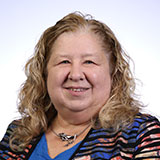As I write this, traveling into Philadelphia on the train from Connecticut, snow is lightly falling and air travel is already disrupted on the East Coast. Yet elsewhere the sun is shining and flights are on time.
Eventually, flight delays will affect travel even in the sunny areas, and we will all feel the pain as a nation of travelers.
Ripples from even a small change magnify and create waves. We have seen an ever-growing pattern of ripples affecting the stream of cancer care delivery in 2013 and prior years. Sometimes, in an effort to educate and anticipate, we project the downstream impact of what are initially considered to be small changes and get slammed for crying doom before it happens.
How often have you called a representative or senator in your state or in Congress to alert them to pending issues? We know oncology, and understand our patients and the day-to-day issues they face. It is our obligation to look at all change and consider whether the intended changes will actually take place. We have no choice but to look forward and anticipate, but now the field we need to survey is expanding.
The weight of many small changes can create a long-lasting impact. Oncology is not a stand-alone specialty, and our connection with other services and patient medical conditions means that we are also affected by changes in other areas of the healthcare delivery system as well as to the nation’s economy. Those ripples, beginning outside of our normal focus of attention, are likely to hit with more force than the regular nuisances that we worry about daily.
These storms swirling outside of our normal field of influence encompass control of healthcare dollars on a global basis. We rely on referrals from primary care, surgeons, pathologists, and others. Cancer must be suspected and detected before we can consider treatment. We rely on imaging, diagnostics, complementary surgery, and radiation therapy as part of the cancer care process. We focus on care details, developing oncology medical homes, quality programs, care guidelines and pathways, and other elements that are—for the large part—under our control. While we build solutions from the oncology community outward, we need to also engage with the issues growing outside of our normal field of influence. Where are the biggest storms coming from the outside?
1 Accountability. Many emerging accountable care organizations will be flashes in the pan and dissolve as the complexity of the task they have undertaken overwhelms them. However, many more organizations are taking the role of accountability very seriously and starting significant changes that will affect the oncology community and care process. Treatment choices, costs, and care patterns of patients diagnosed with cancer will be affected as integrated systems or primary care groups work with private health plans to develop performance measures or even risk models that encompass total costs of care for an insured individual or population. Knowing who is entering this market, how they are defining accountability, and what choices they are making for controlling referrals, imaging, diagnostics, and preferred provider networks will be essential in 2014 for oncology groups.
2 Provider networks. Are you in or out? Are major insurers setting a course in 2014 to restrict networks and just have not yet had that conversation with you? Right and left, practices and physicians—even full academic hospital physician networks—received letters in 2012 and 2013 that they were being dropped from a provider network for no cause other than a change in business direction. This will become even more of an issue as those insurers, struggling to make the dollars work on health exchange insurance programs, balance their costs and provider options, or as institutions accepting risk and financial accountability for care, review their provider pools for how much control they hold in costly specialties. Look at your alignments, assess your opportunities and vulnerability.
3 Patient financial pressures. Patients are facing higher deductibles, copays, coinsurance, and other health-benefit restrictions. In some cases, formulary restrictions may not include the particular treatment that the physician or patient may desire. How will those financial or benefit-design pressures affect patient choice for treatment? The days are over when a physician could say with confidence, “I have the best reputation in the area, no matter what, so patients will overcome any hurdles to come to me.” We are starting to see patients acquiescing to benefit limitations on referral options, as well as making hard choices when faced with high costs and limited financial resources. It is unfortunate, but reality.
Oncology Practice Managers
As we face 2014, challenges not just from arenas we habitually address, but new expanded challenges are coming at us from unfamiliar directions. We now have to keep our eyes on subtle ripples growing elsewhere in our markets; partnerships and institutional affiliations will become ever more important for both community and institutional cancer groups. Oncology practice managers will continue to be crucial to oncology, for their business and strategic acumen and focus, as well as financial and operational skill sets.
Eventually, these changes will shift the course of oncology practice. That is inevitable. How we ride the waves and adapt will be determined by the strength of our vision and tenacity. Patients will continue to battle cancer. Physicians and nurses will continue to treat them. How, and in what structure, may change. Strong leadership will always be needed, even in the new order. We look forward to traversing this course together with you.


